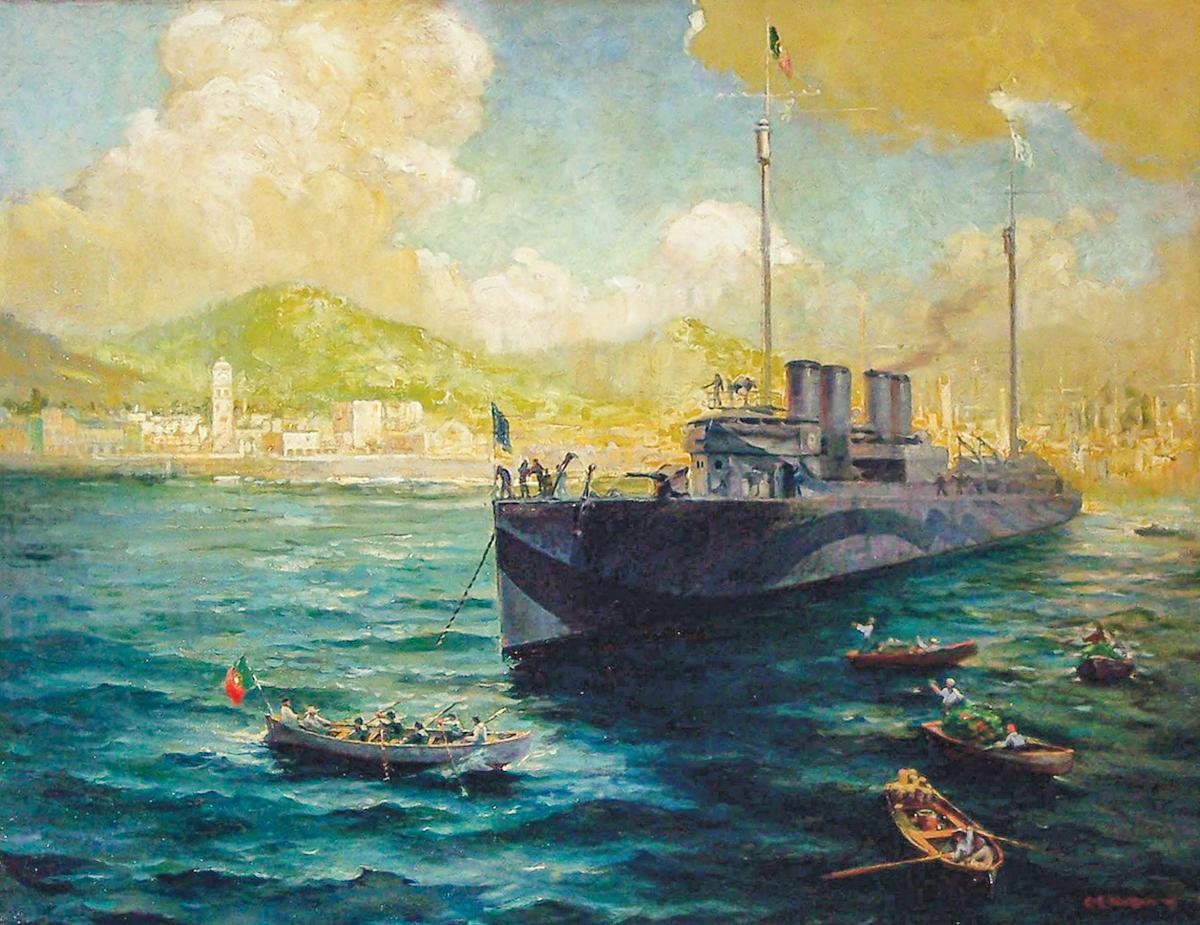Naval History contributors range from professional historians to veterans to history buffs. But, for the magazine’s staff, the most appreciated authors are those who actively serve in the U.S. Sea Services. Given their busy, frequently erratic schedules, researching and writing a history article requires sailors, Marines, and Coast Guardsmen to exert extra effort. Moreover, the publication of their stories conveys the message that they—as well as their service branches—value naval history.
This issue’s cover story, “The ‘Deepest Insult . . . since the Norman Invasion,’” is by Navy Lieutenant Carlos R. Rosende, a surface warfare officer. It recounts one of naval history’s most dramatic exploits—when the Dutch fleet ran wild through the English Royal Navy’s main anchorage on the River Medway in 1667.
The raid took place during the second of three Anglo-Dutch wars. Although the war happened 350 years ago, it still offers lessons for the present day, including that trade and maritime competition easily can lead to open conflict, and fiscal irresponsibility can result in naval disaster.
The article is Rosende’s second to appear in Naval History. He submitted his first, “‘We . . . Must Expect a Disaster’” (April 2013, pp. 16–25), while still a U.S. Naval Academy midshipman. He told me an Academy research paper he wrote “formed the bones” of his latest contribution. “I had hoped to submit it to Naval History a long time ago, but my sea tour caused a four-year delay in writing it.”
Another active-duty author, Navy Commander Joel Holwitt, wrote “People Create High Velocity Outcomes,” about the rapid development of intercontinental and submarine-launched ballistic missiles. The article earned him second prize in the Chief of Naval Operations’ 2018 Naval History Essay Contest, professional category. If the commander’s name is familiar, it may be because he earned first prize in the CNO’s 2017 Naval History Essay Contest (see “Recapturing the Interwar Navy’s Strategic Magic,” October 2017, pp. 26–33).
Elsewhere in this issue, President Franklin D. Roosevelt’s love for and expansion of the U.S. Navy is the subject of Michael Hull’s article, “FDR & His Mighty Navy.” Hull delves into Roosevelt’s World War I–era tenure as Assistant Secretary of the Navy, during which he risked U-boat attack as he steamed to Europe on board the USS Dyer (DD-84) to inspect naval installations.
Despite occasional heavy seas, FDR evidently enjoyed the voyage and was impressed enough with the Dyer to later commission a painting of her arrival in Ponta Delgada Harbor, Azores, during his trip. The artwork was hung in a prized location—behind Roosevelt’s desk in his private study at Hyde Park, New York. The painting still hangs there, in what the Franklin D. Roosevelt Presidential Library and Museum calls its “most historic space.”
Regular Naval History readers know that each issue’s “Acts of Valor” feature highlights the Medal of Honor heroics of a member of the Sea Services. The subject of this installment, Lewis C. Shepard, had a Forrest Gump–like Civil War career. He served in a Union infantry regiment and then with an artillery battery before transferring to the Navy and serving on board the screw frigate USS Wabash. Along the way, he was captured by Stonewall Jackson’s troops and fought in a trio of major battles: Chancellorsville, Gettysburg, and Fort Fisher.
Richard G. Latture
Editor-in-Chief




